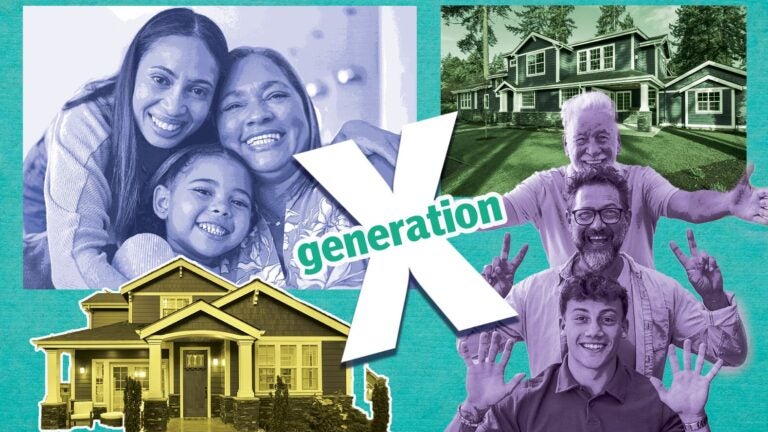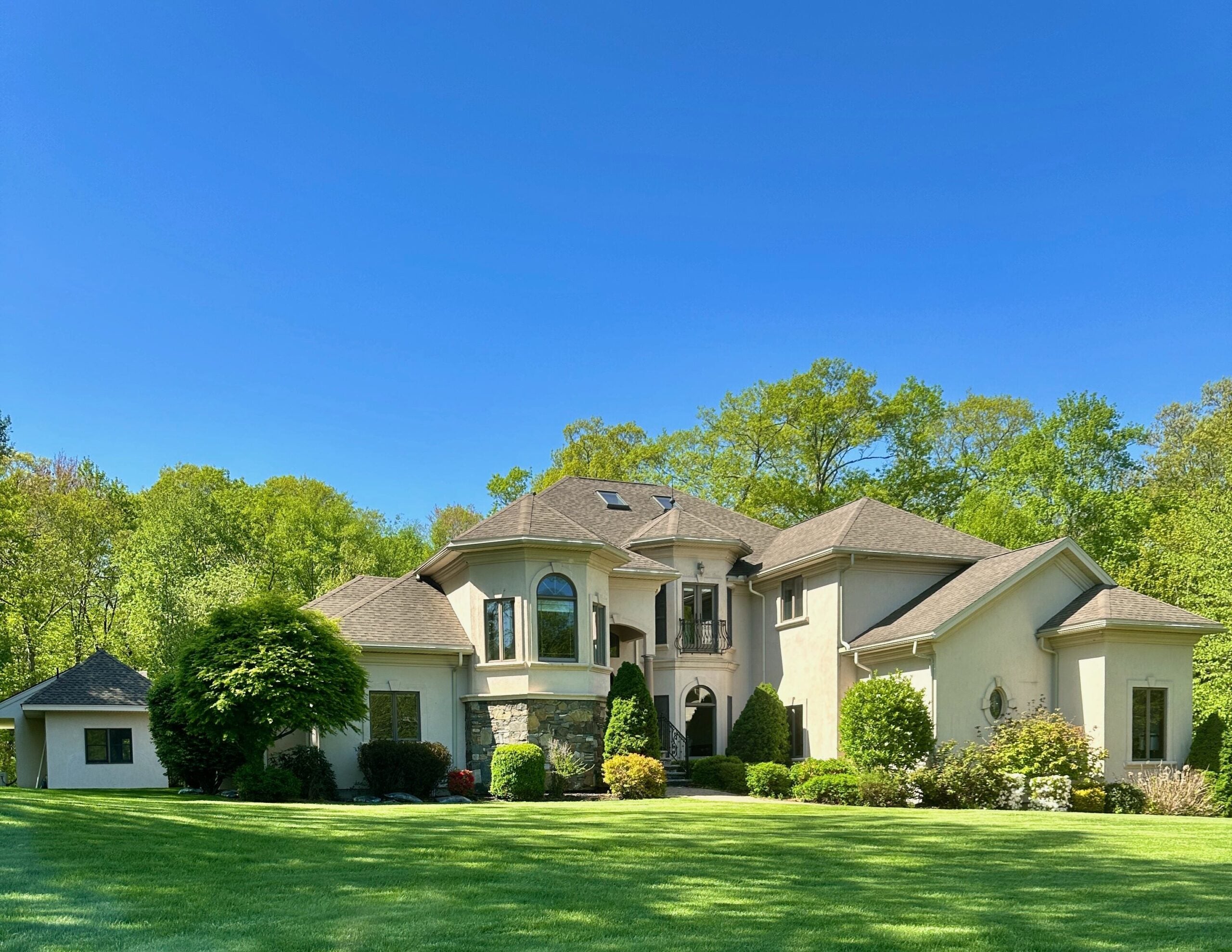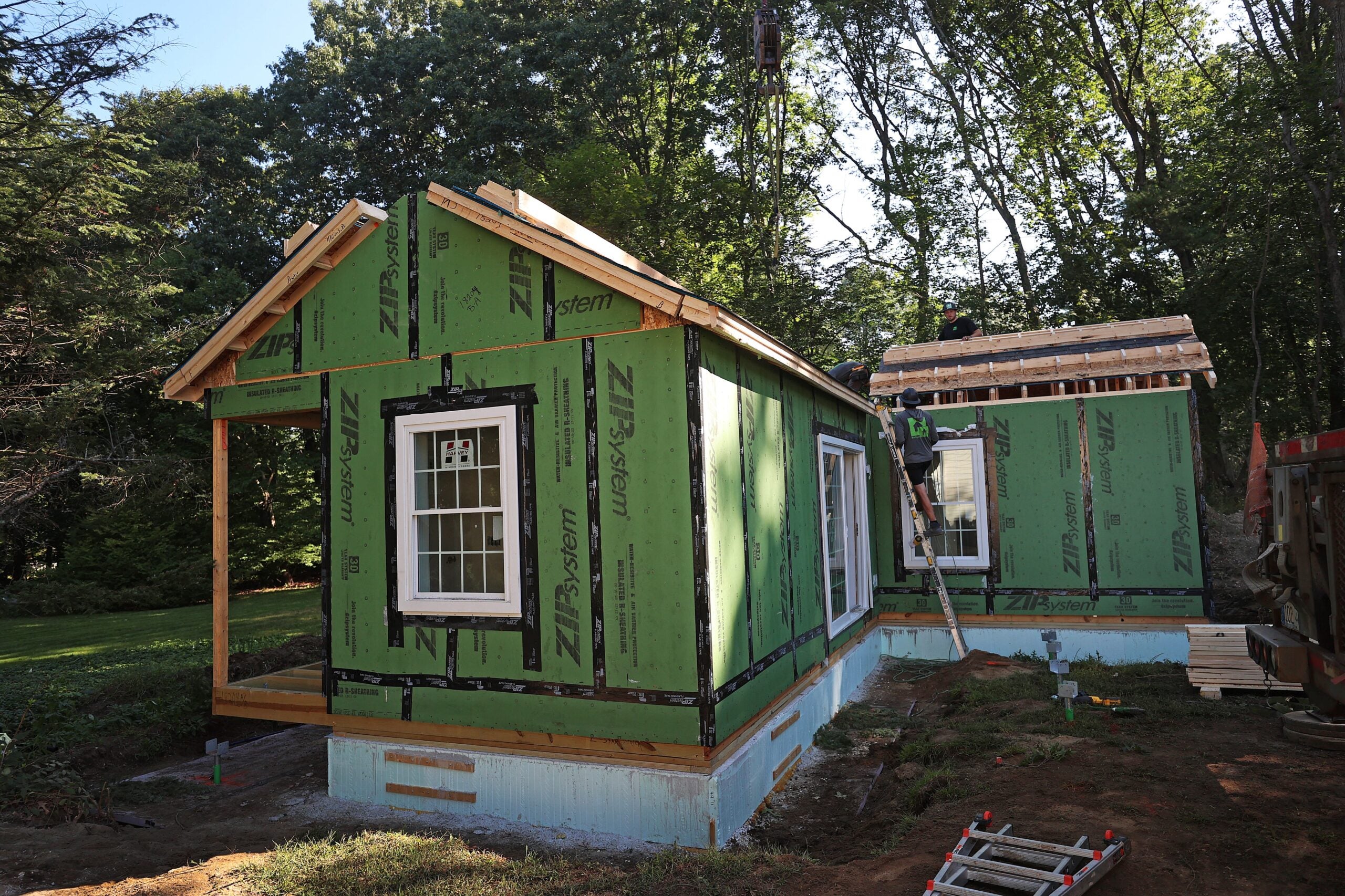Real Estate
As the last era to gain a foothold in the housing market, some Gen Xers are creating multigenerational living arrangements.

When the film “Reality Bites” premiered in 1994, its characters became cultural symbols of Generation X’s youthful disaffection. Now 31 years later, some Gen Xers are nearing retirement.
Those born between 1965 and 1980 are now the “sandwich generation.” They’re in a hinge position, caring for both their parents and their children. And as the last generation to gain a foothold in the housing market, some of those are using that buying power to transition into age-friendly housing and configure family units into multigenerational living arrangements.
Sutton resident Jessica Bruno, 53, first set up her multigenerational home 14 years ago. It wasn’t a novel concept for her at the time; she was living in her childhood home with her grandparents, parents, and child, amounting to four generations co-living. Now down to three generations, Bruno and her fiancé Jim Lenihan, a contractor, occupy a new house, which over time they have modified to create individualized spaces for different members of the family. They have plans to build a new multigenerational home for themselves in 2026.

She’s chronicled their home through her blog, Four Generations One Roof — reaching and advising over 45,000 followers on Instagram.
“Multigenerational living is not a setback. Learning how to build smarter, live connected, and design for what actually matters. It took me a while to figure that out. We created a second master suite in our multigen home — because privacy and family can coexist. You don’t need a ‘someday house.’ You just need a setup that works for your real life right now,” she wrote in an Oct. 31 post.
“At first it was a little awkward,” she wrote in another post about her fiancé moving into the house with her family. “Now he says he’s never leaving … my dad makes him a full breakfast EVERY. SINGLE. Morning.”

To guide families through multigenerational configuration, Bruno reimagines spaces to convert their function, such as a project that turned a spare room into a walk-in closet space; that created a second bedroom suite so that she and her parents could each have one. Finished basements make great teen hangout areas. And then there’s the work of making all that arrangement stylish in a way that appeals to all living there — and doing so on a budget.
Bruno also consults on design and interiors for those interested in the format, and Lenihan envisions and builds multigenerational homes in his work. He specializes in building the structure, and then Bruno adds her touch, fine-tuning layouts, color, and finishes.

Walpole-based realtor Shawna Young said she’s had many of her Generation X clients reorganize their living situations into multigenerational arrangements.
It amounts to a combination sale: selling their homes, selling their parents’ homes, and purchasing a home for all to live together. On the older end of the bracket, she’s seeing buyers sell homes to get to more accessible one-level living as they begin to consider aging in place.
Interest rates haven’t immobilized them.
“I’ve had the busiest year I’ve ever had in real estate in 11 years,” said Young.
According to the National Association of Realtors 2025 Home Buyers and Sellers Generational Trends Report, 45- to 59-year-old home buyers had the highest earnings of any demographic, and purchased the largest homes. Of all sales, they were at the table for 24 percent of them. They also were more likely to buy a multigenerational home (21 percent of sales).
Rachel I. Reiser is the assistant dean for Undergraduate Student Experience at Boston University’s Questrom School of Business. She is also the founder of Generationally Speaking, which “provides consultation to companies and other organizations in helping them to consider generational issues” — and she’s a Gen Xer herself.
“A generation, broadly defined, is a group of people who can be categorized by a similar birthspan, generally perceived as 18-20 years,” said Reiser. “The idea is that they experience different major life events at a similar age range to one another during certain form periods.” Think 9/11, COVID, or the Challenger explosion.
“How that’s experienced is dependent on what stage of life you’re in,” she said.
It’s a tricky way to generalize about any group of people, Reiser cautioned, as 18-year birthspan groupings have begun to lose relevance, largely driven by technological changes.
“We’re seeing shorter definitions of birth span, and almost like microgenerations within that,” she said.
And while Generation X — more than others that came later — may represent a last stand for traditional notions of generational identity, the factors that shaped them were often significant influences, said Reiser. High divorce rates often led to lower birth rates, and hands-off parenting gave rise to the term “latchkey kid.”
The generation also tended to attain real estate in a way that subsequent ones haven’t — or can’t. And though she said Generation X was more likely to be targeted by predatory lending schemes in the 2000s, they benefited from lower interest rates. Now, there are options on the table as they begin to age, and they are shaping their choices now.
“It appears to be the last generation to have the potential for a financial future that is more prosperous than that of our parents’ generation,” she said. “They have this power … But given the amount of the population, it’s kind of an outsized power,” she said. “Generation X is like the last vestige of the old order.”
Juli Ford, 56, is a real estate broker and multigenerational living advocate (she lives in one herself). For some who feel part of the “sandwich” label, multigen homes are a logical combination of their buying power and a tough market for younger generations.
“We … have aging parents, and either almost-adult or young-adult kids, and we’re in this huge crunch because aging parents need care,” she said. “It’s getting harder to afford that … and the younger generation can’t afford housing.”
Several times this year, Ford said she’s encountered potential downsizers who expected to enter condo life, only to realize they had immediate family in need of housing.
“They’re actually selling that downsized home and upsizing because they’re realizing, ‘Oh, this is terrible. There’s no place for my kids to go,’” she said.

Solutions come in a few shapes. For some, like Ford, in-law apartments can host parents. Accessory dwelling units (ADUs) became legal in Massachusetts in August 2024, accommodating attached or detached living spaces on the site of another single-family home.
“When we talk about ADUs, we’re often thinking of detached, like those cute little backyard tiny houses or backyard bungalows,” she said. “But an ADU can also be a finished basement.”
“We were doing multigenerational living just by choice, just because we wanted to, because it worked for us,” said Bruno. “But now a lot of people, I feel like, are doing it because the economy is just out of control.”
Address Newsletter
Our weekly digest on buying, selling, and design, with expert advice and insider neighborhood knowledge.



